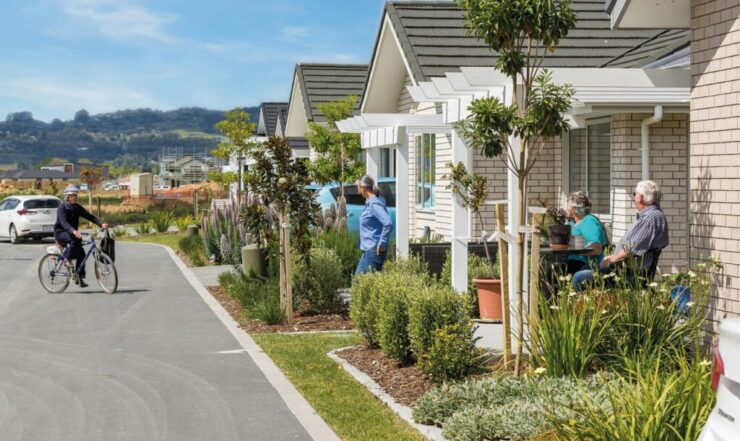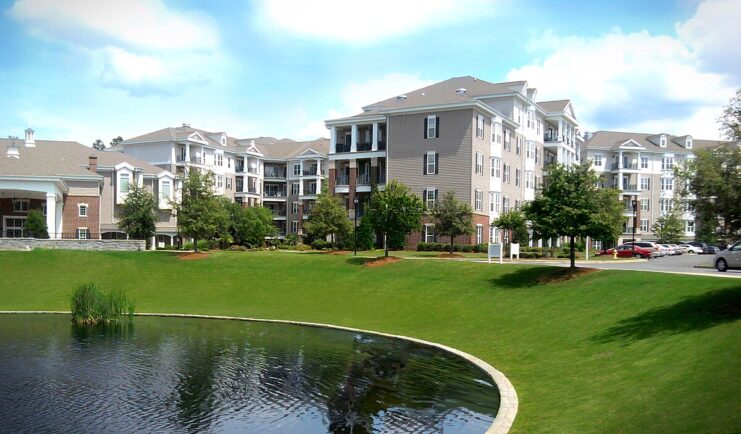Retirement villages, increasingly popular among aging populations, offer a community-based living arrangement tailored to the needs and preferences of retirees. These villages are designed to support an active, fulfilling, and secure lifestyle while providing varying levels of care services. As the global population ages, the demand for such specialized housing options continues to grow, making it essential for seniors and their families to understand how retirement villages function and the benefits they offer.
Types of Retirement Villages

Retirement villages cater to a diverse range of needs and preferences, offering various types of communities. Independent living communities are perfect for active seniors who seek a maintenance-free lifestyle but require minimal assistance. Assisted living communities, on the other hand, provide more hands-on support with daily activities while promoting independence. Continuing Care Retirement Communities (CCRCs) offer a comprehensive, tiered approach to aging, adapting the level of care as residents’ needs evolve. For individuals with cognitive impairments, memory care communities offer specialized programs and secure environments to enhance quality of life.
Benefits of Retirement Villages
The allure of retirement villages lies in their multifaceted benefits. Residents enjoy maintenance-free living, eliminating the burdens of home upkeep and allowing more time for leisure and social activities. These communities are social hubs, providing a plethora of activities that foster engagement and companionship. Healthcare services are readily accessible, ensuring timely support and promoting wellness. Furthermore, the secure environment of retirement villages offers peace of mind to both residents and their families, knowing that safety and emergency response measures are in place.
Costs and Financial Considerations
Navigating the financial landscape of retirement villages is crucial. Residents typically encounter entrance fees and monthly fees, which vary widely based on the location, type of community, and services offered. Understanding the coverage of Medicaid and Medicare is essential, as it can significantly influence the affordability of certain healthcare services. Additionally, long-term care insurance can offer financial relief by covering costs not included in traditional health insurance, making it an important consideration for prospective residents. Before committing you should look at what’s on the market, check out retirement villages Western Cape, and learn more in the process.
Choosing the Right Retirement Village

Selecting the appropriate retirement village is a decision that profoundly impacts one’s quality of life during the golden years. Proximity to family and friends is often a top priority, ensuring a strong support system and regular visits. The amenities within the community, such as recreational facilities, dining options, and cultural activities, contribute to an enriched and active lifestyle. Assessing the availability and quality of healthcare services is paramount, especially for those with specific medical needs. Lastly, aligning the choice with financial capacity and considering future expenses ensures a comfortable and sustainable retirement life.
Residential Options
Retirement villages offer a variety of residential options to suit different lifestyles and preferences. Apartments in retirement villages are designed for convenience and accessibility, often providing communal areas for social interactions. Cottages, villas, and condos offer more space and privacy, catering to those who seek a more house-like living arrangement within the community. For individuals who prefer a shared living experience, there are options that provide a communal lifestyle while still offering private spaces. This variety ensures that every senior can find a home that resonates with their personal style and needs.
Eligibility and Admission Criteria
For many, the transition to a retirement village marks a significant shift in lifestyle, and ensuring eligibility and meeting admission criteria are the first steps on this journey. Generally, retirement villages require individuals to be of a certain age, often 55 or above, and able to live independently. Financial stability is also a key consideration, as residents must be capable of committing to the financial structure of the village, which might include entry fees, recurrent charges, and exit fees. Once these boxes are ticked, the application process unfolds, typically involving interviews, tours, and a review of legal and financial documents. Patience is a virtue during this phase as waiting lists can be lengthy, especially in sought-after villages, reflecting the desirability and limited availability of spots.
Resident Rights and Responsibilities

The tapestry of life in a retirement village is woven with the threads of residents’ rights and responsibilities. Residents have the right to respect, privacy, and autonomy, alongside access to support and community facilities. These rights are not just moral guidelines but are often enshrined in law, offering residents protection and a clear recourse should their rights be infringed upon. Correspondingly, residents bear responsibilities, including abiding by community rules, maintaining their property, and contributing to the village’s communal life. This balance ensures that retirement villages are not just places to live but communities that thrive on mutual respect and support.
Healthcare and Medical Care
Healthcare provision is a cornerstone of retirement village life, offering residents peace of mind and support as they age. Many villages boast comprehensive healthcare services, including on-site medical staff, wellness programs, and emergency response systems. These services ensure that medical care is readily accessible, providing residents with the comfort of knowing that help is at hand whenever needed. Additionally, partnerships with local healthcare providers can offer seamless access to specialized medical care, ensuring that residents’ health and well-being are always a top priority.
Social and Community Life
A vibrant social and community life is the heartbeat of any retirement village, offering more than just a place to reside; it offers a place to thrive. Villages often foster this sense of community through a plethora of activities and events, from group excursions and fitness classes to cultural events and communal dining. These activities not only provide enjoyment and fulfillment but also forge strong bonds among residents, creating a supportive network that celebrates the joys and shares the challenges of the later stages of life.
Aging in Place and Transitioning

The concept of ‘aging in place’ is central to the ethos of retirement villages, allowing residents to live independently and comfortably in a familiar environment, even as their needs change. Villages are increasingly designed to be adaptable, offering different levels of care within the same community. This flexibility ensures that residents can transition to more supportive living arrangements if necessary, without the upheaval of relocating to unfamiliar surroundings. It’s a compassionate approach that respects the dignity and independence of individuals as they navigate the complexities of aging.
Making an Informed Decision
Choosing a retirement village is a decision that merits careful consideration and thorough research. It’s crucial to weigh factors such as location, facilities, community culture, and financial arrangements. Prospective residents should visit multiple villages, speak with current residents, and review all legal and financial documentation meticulously. Seeking advice from trusted advisors, such as financial planners or legal counsel, can also provide valuable insights. Ultimately, making an informed decision means finding a village that not only meets your needs but also feels like home, where you can envision yourself leading a fulfilling, joyful life.
In conclusion, transitioning to a retirement village is a significant life change that offers a blend of independence and community, support and freedom. By understanding the eligibility criteria, rights and responsibilities, healthcare options, social opportunities, and the concept of aging in place, prospective residents can make an informed decision. This choice, made thoughtfully, can pave the way for a fulfilling, vibrant chapter in the journey of life.
Related Posts:
- How Does Reverse Mortgage Work When You Die? Tips…
- Decoding Dog Behavior: How to Train a Dog to Sit –…
- What Is JIT Access? Tips and Insights for a Secure System
- Understanding The Technological Requirements for…
- How Long Does Vape THC Stay in Your System?…
- Metal Roof Expenses ─ Tips for Understanding Costs…












